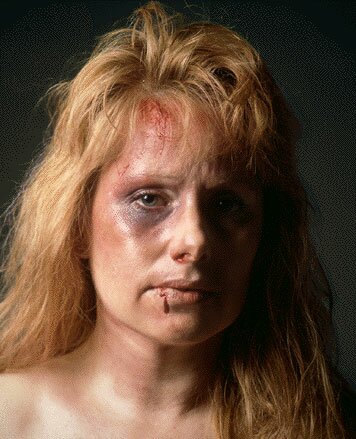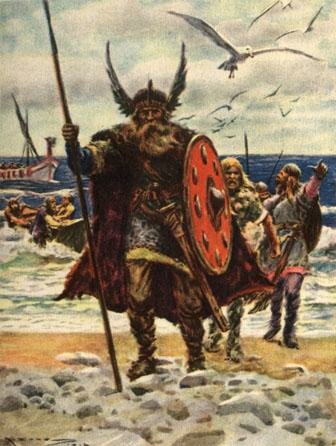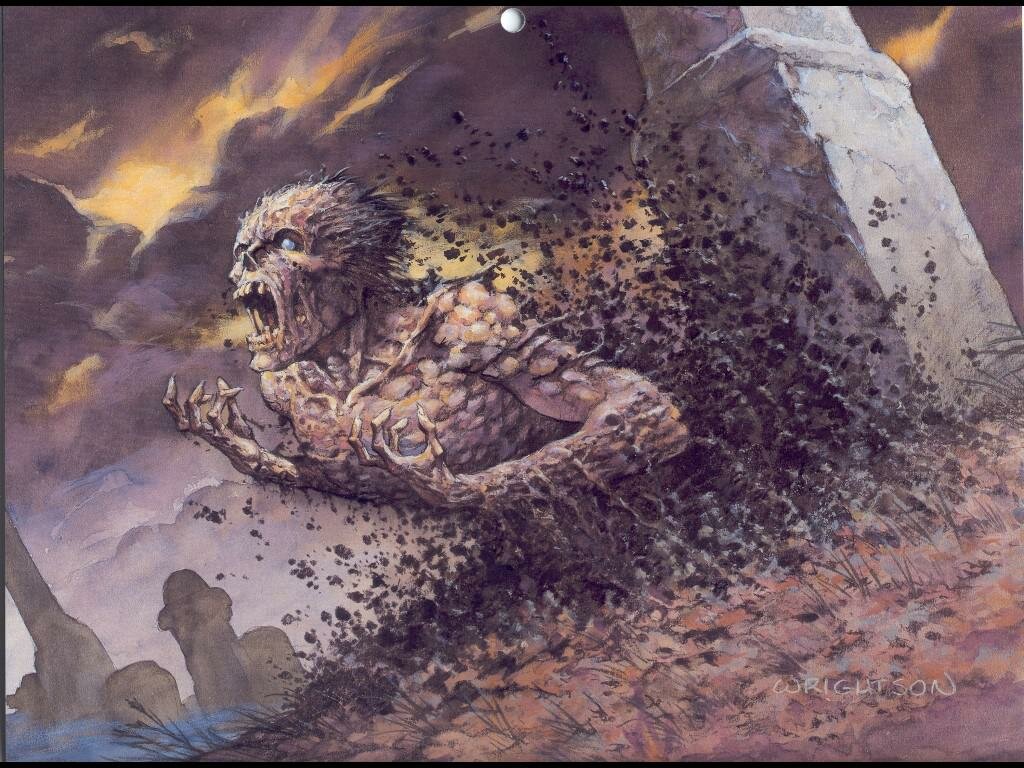Top 10 Best Movies Based on Manga
Suggested by SMSManga are Japanese comics, similar to comic books and graphic novels, as we know them. Like American comics, manga are often a breeding ground for cartoons, films, and a whole host of other publishing or merchandising avenues. Unlike in America, where comic books themselves are still outside of mainstream (although the film adaptations of comic books routinely score well at the box office), manga is read widely by all age groups in Japan. Manga story lines have transitioned into animated TV series (known as anime), animated or live-action films, video games, and trading card games. Not all manga has successfully translated off the page, but here are 10 of the best films based on manga that made the leap.
10. Ichi the Killer

Ichi is a quiet, cowardly young man, but when enraged, he becomes homicidal. Ichi forms the center of the manga series, which ran from 1998 to 2001 and was later adapted into a live-action film in 2001. The story builds around a “cleaner” named Jijii who works manipulates Ichi into killing members crime lords in order to turn Yakuza clans against each another. Jijii exploits Ichi’s weak mind and implants false memories that can fuel his rage.
The film received mostly positive reviews from critics, but earned far better reviews from audiences, earning a 7.1 out of 10 rating on the Internet Movie Database and 82% positive reviews on Rotten Tomatoes.
9. Speed Racer

Speed Racer is best known the U.S. audiences in its anime format, airing as a cartoon series from 1967 to 1968. In 2008, the Wachowski brothers (of The Matrix fame) wrote and directed a big-budget film adaptation that featured stars such as John Goodman, Susan Sarandon, and Christina Ricci. The story pits a pure love for racing against corporate greed. While the main character, Speed, loves racing for its own sake, his brother, Rex, gets caught up in a corporate conspiracy to manipulate races for profit. Speed enters the Grand Prix with a bounty on his head, but Speed wins the race while exposing the corruption and crimes of a rival owner.
Speed Racer had plenty of star power in front of and behind the camera. Renowned producer Joel Silver produced the movie, and the Oscar-winning effects designer from The Matrix was brought in to design the visual effects. Despite the collective might behind the movie, Speed Racer was nearly universally panned by critics. Still, it raked in $115 million in total gross sales, only making it a “box-office failure” because of it’s hefty $120 million budget. In 2011, Time magazine named it one of the 25 best sports movies of all time.
8. Shogun Assassin

Shogun Assassin is a 1980 compilation release for Western audiences that combined the first two films in the Lone Wolf and Cub series, which was based on the Lone Wolf and Cub manga series from the 1970s. The film blended nearly all of Lone Wolf and Cub: Baby Cart at the River Styx with about 12 minutes of Lone Wolf and Cub: Sword of Vengeance. The story follows a samurai who had been targeted by his Shogun, who attempted to have the samurai killed. Though the samurai survived the attack, his wife did not. Left with his 3-year-old son, the samurai wandered the countryside as a hired killer until he could exact revenge on the Shogun.
Known for its gratuitous violence, the film was nearly banned by the Home Office in the United Kingdom, which was used to fuel publicity when the film was re-released in 2000. Though the film received mixed reviews, it has gained a pop culture notoriety. Quentin Tarantino’s Kill Bill Volume 2 gave it a shout-out by having his main character watch a clip from the film. Lines and soundbites have also been sampled by U.S. rappers.
7. Astro Boy

The story centers on a boy named Toby. In a freak accident, Toby is killed by an out-of-control robot. Toby’s father, in despair, creates a robot clone of Toby and uses one of his son’s hairs to infuse the robot with Toby’s DNA, giving the robot his son’s memories and causing the robot to think it is Toby. As robot-Toby struggles to understand his true identity, government officials begin to track him down so they can gain control of the limitless positive power source that energizes him.
Like Speed Racer and Dragonball Evolution before it, Astro Boy did not fare as well as hoped in American and Japanese theaters but was wildly successful in China. In fact, Astro Boy set a new box-office record in China for CG animated films. The film used the voices of well-known actors like Nicholas Cage, Charlize Theron, and Donald Sutherland. Despite not gaining much traction with fans, Astro Boy did receive positive reviews from some critics.
6. Death Note
The Death Note manga series appeared in print from 2003 to 2006, with the film adaptation first released in 2006. The “death note” of the story is a supernatural notebook discovered by a high school student named Light. The book, which came from a god of death named Ryuk, has the special power to kill anyone whose name is written in it. Initially, Light uses the book to kill criminals, but eventually the power of the book becomes known and Light finds himself the target of an investigation by a man considered the best detective in the world.
Death Note topped the Japanese box office in 2006, earning $41 million. The film’s North American release was limited, but in 2009, Warner Bros. acquired the rights and in 2011 announced that they were moving forward with a remake that has been rumored to star Zac Efron in the role of Light. Nearly 14,000 users on the Internet Movie Database gave it a combined 7.8 rating.
5. Azumi

The manga series Azumi was created in 1994. Azumi is a young female assassin living and working in Feudal Japan and charged with killing warlords who threaten the peace. Azumi is often thought to depict enlightenment – a freedom from attachment to worldly objects. She stands in contrast to the people she assassinates, who are driven by single-minded obsessions and attachments.
The first film adaptation was released in 2003, with a sequel following in 2005. The film’s 2006 U.S. release was nationwide, though limited. Despite mixed reviews from critics, the film earned audience and popularity awards in 2003 and 2004 from the Japanese Academy Awards, the International Film Festival of Boston, and the Philadelphia Film Festival.
4. Akira

Akira is an animated science fiction film released in 1988 based on the manga of the same name. In the background to the story, Akira is a young boy who had been subjected to secret government testing in extrasensory perception, resulting in his development of god-like powers. He ultimately lost control of his powers and destroyed Tokyo in a cataclysmic explosion in 1988. The narrative itself picks up in 2019, when Tokyo is nothing more than a post-apocalyptic dystopia known as Neo-Tokyo. Kaneda, a bike gang leader, takes center stage as he tries to stop Tetsuo, another bike who also has psychic powers, from unleashing the powerful and dangerous Akira on Neo-Tokyo.
The film, though a small-budget animated film, was widely praised by critics such as Roger Ebert and enjoys a 90% “fresh rating” on Rotten Tomatoes. Its plot differs from the manga, in part because the manga is a gigantic 2,100-page epic, but the movie does maintain the fundamental settings and characters of the original story. Some critics consider it a landmark anime film, influencing future anime productions. Akira has taken on a “cult classic” status. More than 53,000 users gave it a combined rating of 7.9 out of 10 on the Internet Movie Database.
3. Yu-Gi-Oh!

Yu-Gi-Oh! was a long-running manga series that stretched from 1996 to 2004. The original manga developed into numerous anime television shows, a popular trading card game, video games, and movies, making it one of the most successful manga-based franchises in history.
At the center of the story is Yugi, a high school student whose grandfather gives him fragments of an Egyptian artifact. Once Yugi pieces together the fragments, he becomes possessed by an ancient Pharaoh named Atem who has no memory or knowledge of his time. The story unfolds as a quest to discover and recover the memories of Atem, while battling the Duel Monsters through a card game. The Duel Monsters game in the storyline itself became the basis of the Yu-Gi-Oh! trading card game that continues to be popular in the United States and abroad.
Yu-Gi-Oh! was first adapted for film in 1999 but was released only in Japan. In 2004, Yu-Gi-Oh! The Movie: Pyramid of Light became the first U.S. release for the franchise followed by the 3-D Yu-Gi-Oh! The Movie: Bonds Beyond Time, which was released in 2010 in Japan and 2011 in the United States. The films have succeeded in Japan (though not as much in the United States), with Pyramid of Light ranking as the #3 animated movie of all time in Japan.
2. Ghost in the Shell

Ghost in the Shell is a 1994 film adaptation of the manga series that ran from 1989 to 1997. The story takes place in 2029 and centers on an officer’s mission to track down and capture a mysterious hacker known as The Puppet Master. When an unapproved female cyborg is discovered that has no working brain cells but appears to have the “ghost” of someone inside it, the officer becomes engaged in unraveling an extensive government conspiracy that goes beyond The Puppet Master.
The film adaptation was applauded for its seamless blending of computer and cel animation. Several prominent directors, including the Wachowski brothers and James Cameron, have praised the film and expressed interest in working with the material. Total Film’s list of the Top 50 Animated Films put Ghost in the Shell at number 35.
1. Old Boy

Old Boy was a manga series that appeared in print from 1996 to 1998. The story was adapted for film in South Korea and released in 2003 to rousing critical success. The film won the Grand Prix award at the 2004 Cannes Film Festival, receiving praise from director Quentin Tarantino. The story follows a man named Oh Dae-su who is kidnapped and placed in solitary confinement without explanation. While imprisoned, he learns that his wife has been murdered and that he is the prime suspect. He begins training, punching the wall to callous his knuckles and shadowboxing. After 15 years, while digging a hole through the wall to escape, he suddenly awakes to find himself freed, laying on a rooftop and dressed in a suit. With Oh Dae-su freed, the story unfolds into a revenger’s tale, as he seeks out his captors to determine their motives and punish them.
The film was the fifth highest-grossing film in South Korea in 2003. As so often happens, though, critical praise did not lead to box office success in the United States. Worldwide, the film grossed just under $15 million. Despite lackluster sales, Spike Lee announced in 2011 that he plans to direct a new adaptation of the film.










